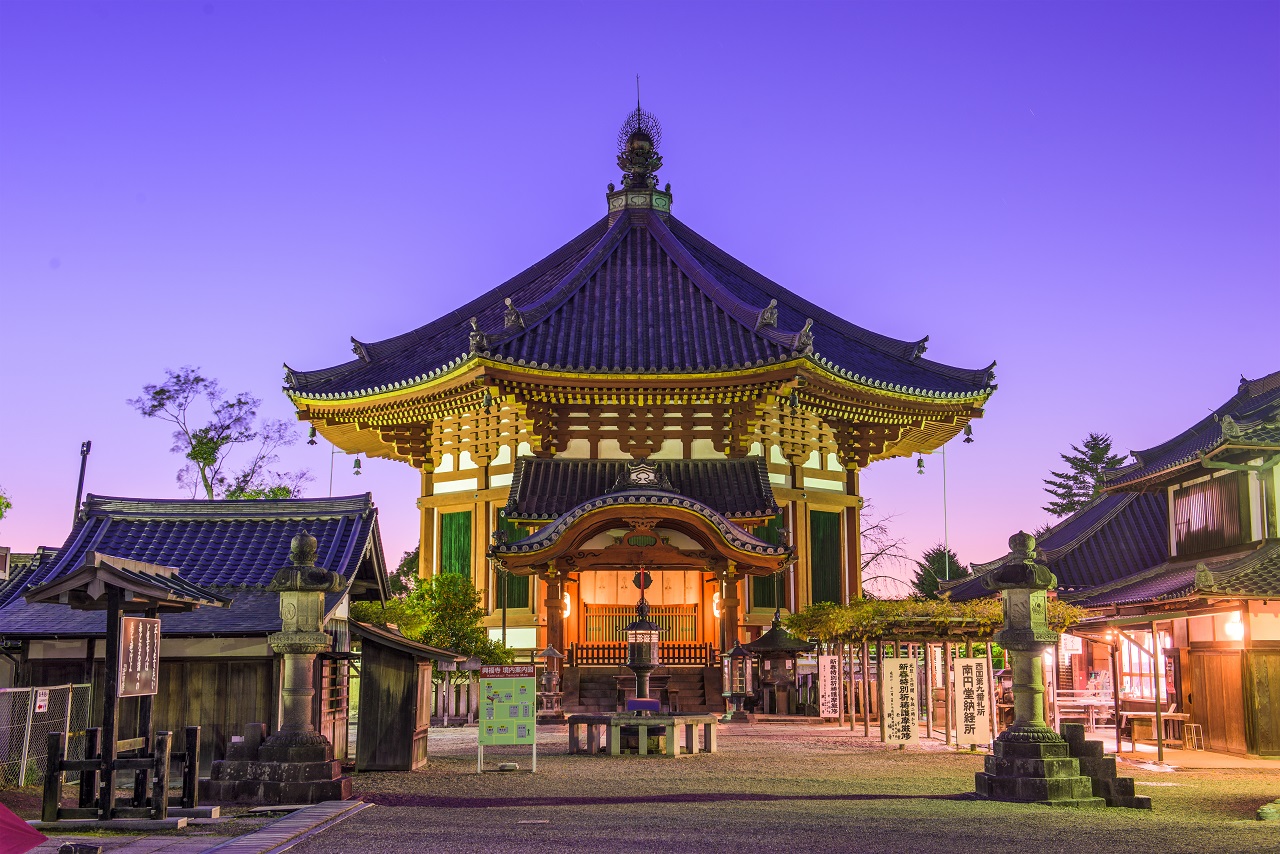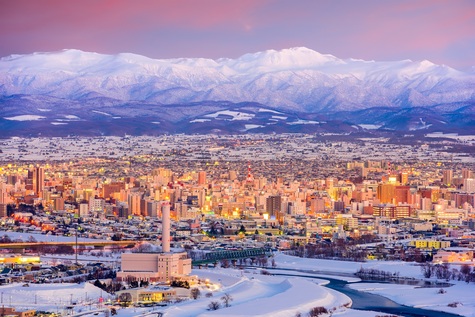
Nara Destination guide
Nara travel guide - What to do, see and visit in Nara
Table of contents:
Introduction to Nara
If you had to name the perfect elements for a day trip they might include a fascinating history, stunning temples and cute animals. For those seeking the ideal day trip, a Nara visit should definitely be on your Japan itinerary. The city of Nara was first established in 710, originally called Heijokyo, and was the first permanent capital of Japan. Prior to this, the capital would move the location when the previous emperor would die and a new one would ascend to the throne. Second only to Kyoto in terms of the richness and quality of traditional sites such as temples, shrines, gardens and museums, there is a wide variety of interesting things to do in Nara. 
Much of the Japan that we know today was formed and defined in Nara Prefecture. Ancient customs and religious practices that laid the foundations for modern Japanese culture are still being practised here. Perhaps what has put Nara on the ‘not-to-be-missed map’ most of all is it’s abundance of furry local friends. Home to over 1000 deer that roam freely throughout the city, these semi-wild deer have become the face of Nara because of their inquisitive and adorably calm nature.
It’s possible to experience the highlights of Japan with this 7-day Itinerary where you can explore Tokyo, Kyoto, Osaka and Nara. With this itinerary you’ll experience two opposite ends of the spectrum; the bright, neon lights and buzz of the big cities to the spiritual, zen temples of the smaller towns.
Nara Highlights
Nara day trip is a popular option for those staying in Osaka or Kyoto. You can easily access Nara with the JR pass which is one of the most economic, efficient and reliable ways to reach the city. Although Nara is compact in size, it is home to eight UNESCO World Heritage Sites which solidify its place as the political and religious heart of ancient Japan. If you have a few extra days, you can slowly make your way through the real-life museum of Nara, delving deep into the beautiful temples, big Buddha structure and the historic treasures that it has to offer. With all of Nara’s sightseeing in close proximity, it is best explored on foot or by circle bus.
What to do in Nara
Upon arrival, your Nara visit will be full of opportunities to explore this historic and beautiful city. Don your comfiest walking shoes and get ready to delve deep into Nara tradition. You could easily spend a few days exploring all of the Nara highlights, so we have curated the top Nara itinerary options so that you don’t miss a thing. This Nara guide will break down the best things to do during your visit.
Big Buddha at Todaiji Temple

Towering at an impressive 15 metres tall, Todaiji Temple is home to one of Japan’s largest bronze statues of Buddha. Buddhism was introduced throughout Japan to calm social and political unrest at the time, and the Great Buddha was erected as a part of this movement. The Main Hall (kondō) in which the Great Buddha is housed, has twice been destroyed by fire. Despite this, the height and depth of the structure remain the same as those of the original. Today, The Great Buddha Hall stands as the largest wooden structure in the world.

Looking for more reasons to visit Nara? The freely-roaming deer should be enough to convince anyone! The Sika deer can be found wandering the city and are considered messengers of the Shinto gods. Stock up on deer treats from local vendors and delight in the fun of feeding them straight from your hand!
Omizutori
The annual, sacred water-drawing festival has been occurring for over 1200 years, making it the oldest festival in Japan. The Buddhist ceremony celebrates the return of spring and is said to cleanse people of their sins. Every night from March 1st to 11th, the 8 metre torches are lit with spectacular embers lighting up the sky for around 20 minutes. It’s said that the fire display will bring good luck to the audience of over 20,000 people.
Isuien Garden

Located on the Yoshikigawa river, Isuien translates to “garden founded on water”. The front garden dates back to the Edo period whilst the larger rear garden was created during the Meiji era. Walking through these historic gardens is like taking a step back in time. The Neiraku Museum is located on the grounds and is home to a rotating collection of Chinese, Japanese and Korean pottery and other art.
Found at the foot of Mount Wakakusa, Nara Park is one of the oldest parks in Japan. The vast area covers 650 hectares and is renowned for its pristine woods, historic temples and of course, very playful deer.
Nara Hiking.
For lovers of hiking and nature, then the trails in and around Nara are a dream come true! With over 17 great hiking and walking trails to choose from, a Nara walk is the perfect way to spend a morning. Your friends will be green with envy when they see your Instagram feed with postcard-perfect photos from these epic hikes.
If you have a spare two hours, you could hike the Kasugayama Mountain Trail which loops through the forest and ends at a traditional, thatched teahouse. Smaller trails branch off the main trail which lead to waterfalls and sweeping panoramic views of Nara.
Yamanobe-no-michi is a beginners hike which is mostly flat and leads through some of Nara’s most historic areas. Alternatively Mt Unebi is one of three peaks of Yamato which is revered by locals for its historical significance. The view at the top offers an almost-perfect 360 degree panorama of the Kashihara. On a clear, sunny day you can even see the mountains of Mie in the distance. For a hike that is a little longer and more difficult, the 11.5km Kodo Pilgrimage runs through ancient cedars, colourful maples and offers magnificent views over Nara Park.
Yoshikien Garden
Known as a peaceful oasis nestled in the middle of Nara, Yoshikien Gardens are a colourful, immaculately-kept place to spend an afternoon. Nearby Todaji and Kofukuji temples, Yoshikien Gardens offer a peaceful retreat away from the crowds. Escaping to the Yoshikien Gardens is a treat, no matter the Nara weather or season.
Naramachi National Museum
Naramachi National Museum which predominantly showcases traditional Japanese Buddhist art. You’ll find an impressive array of statues, paintings, scrolls and ceremonial objects. During Autumn, a temporary exhibit featuring an array of treasures from Todaiji Temple makes an appearance.
Kofukuji Temple and Iconic Pagoda

Founded in 710, Kofukuji is a buddhist temple which has become an iconic symbol of modern Nara. The second tallest wooden pagoda in Japan stands at 50 metres, making it just seven metres shorter than Kyoto’s famous Toji Temple. In 1998 it was named as a UNESCO World Heritage Site and listed as part of the “Historic Monuments of Ancient Nara”. The famous five-storied pagoda has become an iconic structural landmark of Nara tourism.
Toshodaiji Temple

Toshodaiji, a UNESCO World Heritage Site, is considered an important temple in the history and development of Buddhism during the Nara Period. Due to their age and architectural significance, most of the buildings at Toshodaiji are considered national treasures.
Heijo Palace

During the Nara period, Heijo Palace was the official imperial residence for the Emperor. At the height of power, Heijo Palace was the center of the nation. It encompassed the Emperor's residence, the palace for ceremonies and the offices of the government. The palace is now open to the public and offers a great chance to explore Nara traditions and history.
Nara side visits
What’s better than one side trip? How about another one! If you have the luxury of time up your sleeves, your trip need not end in Nara. There’s more day trips which are close to Nara, and are worth a visit in their own right.
Yoshino

When you have peaked your Nara exploring limits, head out to the mountains! With over 30,000 cherry trees planted along the slopes of Mount Yoshino, this is undoubtedly one of the greatest spots to visit during the cherry blossom season. With mountainous views and a rich history, Yoshino is just 45 minutes from Nara and is easily accessible with the JR pass.
Iga Ueno

Surrounded by one of the highest stone walls in Japan, you will find Iga Ueno castle. A gorgeous structure that was built over 400 years ago. Iga Ueno is also the birthplace of the famous haiku poet, Basho. Finally, the city is known for its School of Ninjutsu (the art of stealth) which was one of the leading ninja schools during the feudal era. The Ninja Museum is also a popular stop on an Iga Ueno itinerary.

Tucked away in the Kii mountains, the ethereal landscape of Koyasan promises a visit that you will never forget. The Buddhist community of Mount Koya welcomes you to the perfect place to sleep overnight in a Buddhist Temple in shukubo (temple lodgings). A once-in-a-lifetime experience where you can interact with resident monks and enjoy shojin ryori, a traditional Buddhist vegetarian cuisine.
Following these Nara travel tips will ensure that you make the most of your time in the city and its surroundings. Whether you choose to visit for a day or fall in love with the charm of the city and end up staying longer, the history, culture and beauty of the area will hold your attention and capture your heart. From the delectable Nara street food to the breathtaking hikes through nature, there really is something for everyone here!
See also

Nikko Destination Guide
日光國家公園(Nikko National Park)被譽為神道教和佛教山岳崇拜的中心已有多個世紀,它提供風景秀麗的山區景觀,湖泊,瀑布,溫泉,野生猴子和遠足小徑

Sapporo Destination Guide
札幌被譽為日本最年輕的城市之一,以啤酒,拉麵,螃蟹,滑雪和一年一度的札幌冰雪節而著稱,札幌冰雪節設有巨大的冰雕。

Kyoto Destination Guide
京都歷史上是日本的首都和文化中心,並擁有豐富的文化和傳統歷史。了解在京都最好的事情要做,參觀和體驗。

Mt Fuji Destination Guide
富士山是日本的明確標誌。這座孤山不僅有美麗的景色,還為日本的自然,文化和精神地理做出了貢獻。